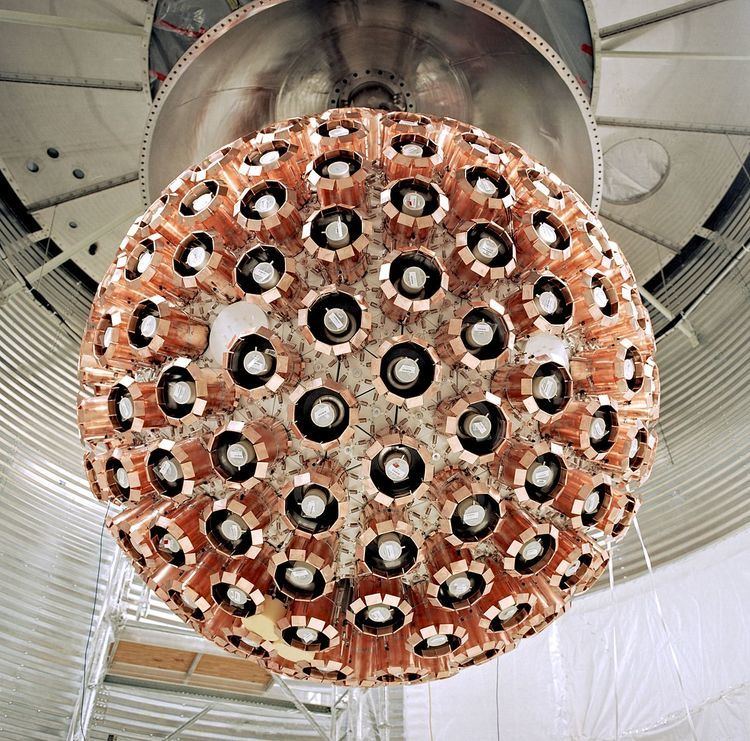 | ||
DEAP (Dark Matter Experiment using Argon Pulse-shape) is a direct dark matter search experiment using liquid argon as target material. DEAP utilizes background discrimination based on the characteristic scintillation pulse-shape in argon. A first-generation detector (DEAP-1) with a 7 kg target mass operated at Queen's University to test the available pulse-shape discrimination at low recoil energies in liquid argon, and was moved to SNOLAB in October 2007 and ran into 2011. Discrimination of beta and gamma events from nuclear recoils in the energy region of interest (near 20 keV of electron energy) is required to be better than 1 in 108 to sufficiently suppress backgrounds in the DEAP-1 detector.
Contents
DEAP-3600 with 3600 kg of active mass is planned for operation beginning in mid 2015, with sensitivity to WIMP-nucleon scattering cross-sections as low as 10−46 cm² at 100 GeV.
A later 50 ton-scale detector (DEAP-50T) is planned.
Scintillation properties and background suppression
Elastic scattering of a WIMP in argon is expected to cause a nuclear recoil. In order to uncover the faint signature of an interacting dark matter particle, the detector is sensitive to low energy interactions, and as such, the signal from the WIMP interaction is hidden within a large collection of events. These events are known as background events. The WIMP signal must be uniquely filtered from these events. In DEAP, as the light output is characteristic to the type of event, be it either a nuclear recoil event or a beta or gamma event, the interaction of each event can be uniquely determined. This is done by finding the ratio of prompt light (<100ns) to late light (<15us) in any given pulse. This ratio is known as Fprompt. Nuclear recoil events have a high Fprompt (~3.0) while beta/gamma events have a low Fprompt (~0.3). Since the interaction (elastic scattering) of WIMPs is expected to cause a nuclear recoil event, low Fprompt events such as gamma interactions can be considered as noise and cut from the data.
"The largest potential background in DEAP-1 is from the beta decay of Argon-39 which has an activity of approximately 1 Bq/kg in natural argon."
DEAP-1
The first stage of the DEAP project, DEAP-1, was designed in order to characterize several properties of liquid argon, demonstrate the pulse-shape discrimination of liquid argon and refine engineering. It was too small to perform a meaningful dark matter search. DEAP-1 utilizes 7 kg of liquid argon as a target for WIMP interactions. Two photomultiplier tubes are used to detect the scintillation light produced by a particle interacting with the argon. As the scintillation light produced is of short wavelength (128 nm) a wavelength shifting film is used to broaden the wavelength so that it falls within the visible spectrum (440 nm) enabling it to pass through ordinary windows without any losses and be detected by the PMTs.
DEAP-1 demonstrated good pulse-shape discrimination of backgrounds on the surface and began operation in SNOLAB. The deep underground location reduces unwanted cosmogenic signals ("background"). It ran from 2007 to 2011 (including two changes in the setup). DEAP-1 characterized the background, determining design improvements needed in DEAP-3600.
DEAP-3600
The second generation DEAP-3600 detector uses 3600 kg of liquid argon, of which 1000 kg is the fiducial volume, and the rest is for self-shielding and background veto. This is contained in a spherical acrylic tank surrounded by 255 photomultiplier tubes and many layers of radiation shielding. Projected sensitivity to WIMP cross-section is 10−46 cm2 at 100 GeV after three years of data taking.
A large, international collaboration from Canadian and UK universities and laboratories are jointly working toward a large tonne-scale detector. The collaboration benefits largely from the experience many of the members and institutions gained on the SNO project, which detects neutrinos, another weakly interacting particle.
Collaborators are from Queen's University, Carleton University, SNOLAB, Laurentian University, TRIUMF, University of Alberta, Royal Holloway University of London, University of Sussex, Rutherford Appleton Laboratory, National Autonomous University of Mexico and most recently Canadian Nuclear Laboratories.
Status
"PMT system has been operational since the end of 2014 and is being calibrated with light sources. ... Inner wavelength shifter was deposited on the acrylic vessel in June 2015".
The DEAP-3600 detector started taking commissioning data in February 2015 with nitrogen gas purge in the detector. Liquid argon dark matter data is expected in early 2016.
DEAP-50T
DEAP-50T is the planned expansion with 50 tons of depleted argon, with a sensitivity of 10−48 cm2.
